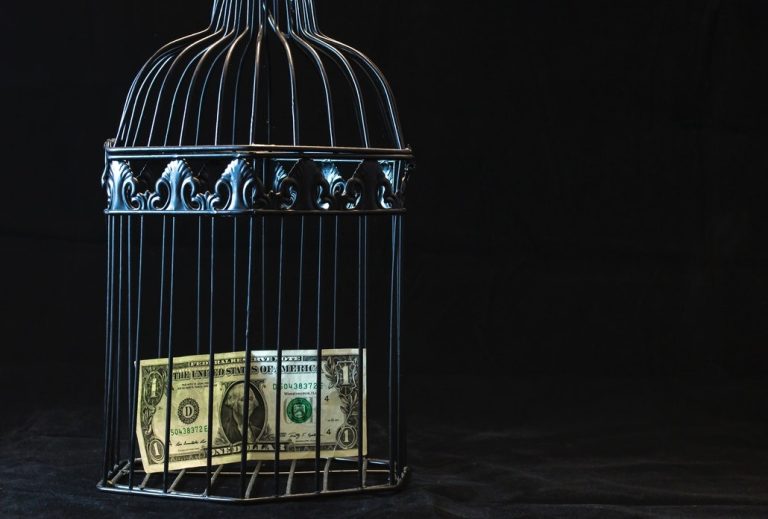Serbia welcomed changes and amendments to three IP-related laws in the fall of 2019; The Law on Copyright and Related Rights, The Law on Patents and The Law on the Legal Protection of Topography of Semiconductor Products. By doing so, Serbia made a step ahead in harmonizing the domestic law with the EU law (specifically Chapter VII, opened in 2017, which regulates intellectual property).
Changes and amendments of the Law on Copyright and Related Rights (hereinafter: the Law), adopted on September 18, 2019, which started to apply on September 26, 2019, closely regulate the protection of authors of software as well as protection of performers and define databases more specifically. The need for a more effective legal protection brought about some changes in the domain of procedural rights (by extending the circle of persons entitled to file lawsuits for violation of copyright and related rights, and by amending the provisions regarding the order of the provisional measures in the procedure). Finally, harmonization with the EU law inevitably led to amendments in the area of collective exercise of copyrights and related rights via organizations for collective management of copyright and related rights.
What Do the Changes of the Law Mean for the Authors of Software
Extended definition. As the previous legal definition of work authorship was outdated in terms of software, changes to the Law introduced not only computer programs but computer programs with all the additional technical and user documentation in any form of their expression, including the prep material for the design.
Software designed in the employment relationship. As of now, the Law provides the provision that regulates the matter of copyright work on the software created in the employment relationship. If the copyright work is a software or database, the permanent holder of all exclusive pecuniary rights on the copyright work is the employer unless otherwise stipulated by the contract. Additionally, the Law provides that the author has the right to special compensation if stipulated by the contract. In practice, that means that the employee will be entitled to this compensation only if it stipulated in the employment agreement. The employees shall be aware of this fact when concluding the employment agreement.
Co-authorship. Given that co-authorship often created dilemmas in practice due to insufficient regulation, this issue is solved by providing completely new provision which prescribes that if the co-authorship is a computer program (or database), the copyright belongs to all co-authors.
What Are the Authorizations of the Legal Transferee of the Software Hold? The Law specifically prescribes the allowed actions by the subject who legally obtained a copy of the software (in cases when the copyright work is a computer program and if not stipulated otherwise). Without the authors’ permission and with no obligation to pay the compensation for the authorship, this subject is authorized by the Law to:
- Permanently or temporarily make copies of software or its parts, by any means and in any form, when it is necessary to use the software according to its purpose;
- To eliminate the inaccuracy of software, according to its purpose;
- Load, display, launch, relocate or install the software in computer memory if it is necessary for the duplication of the software;
- Translate, adjust, arrange and make other alterations of the software and the duplicated results of those actions.
Although the abovementioned issues may be regulated differently by the contract, the Law, however, does not allow for the provision in the contract that prohibits making software copies on a permanent data carrier (i.e., a CD), if that is necessary to use the software.
The person allowed to use the software is authorized by the Law to observe, examine or test the software performance to establish ideas and principles on which any of the software elements is based, on condition of performing these actions while loading, displaying, launching, relocating or installing programs according to the authorizations.
Finally, the Law allows making copies and translation of the originating code without the permission of the authors, if that is inevitable to obtain data necessary for achieving interoperability of individually created software with other programs, under the following conditions:
- That it is performed by the licensee or other subject allowed to use the software or the subject authorized by those persons;
- That the data necessary for achieving interoperability is not available otherwise;
- These actions are limited to only those elements of the software that are necessary to achieve interoperability.
The data obtained this way may be used solely to achieve the interoperability of the individually created software.
On the other hand, the data obtained this way may not:
- Be disclosed to other persons, unless necessary for achieving interoperability of the individually created software;
- Be used for the development, production or advertising of the software that is essentially similar to the original one or any other activity which may violate the copyright on that software.
It is important to know that in case of conflict between the contract and the abovementioned legal provisions, contractual ones will be void.
Increased Rights of Performers
A significant novelty of the Law extends the duration of the pecuniary rights of performers and producers of phonograms from 50 to 70 years.
Furthermore, thanks to the amendments to the Law, actors will receive compensation for broadcasting and re-broadcasting interpretations recorded on the sound or picture carriers. It is important to emphasize that this will contribute to a better position of actors, given that, so far, only those performers whose performances were recorded on sound carriers (e.g. singers) were holders of this right.
The innovation refers to the extension of equitable compensation for performers. Before the amendments to the Law, performers had the right to equitable compensation in cases of leasing copies of their performance record. Novelties in the Law prescribe keeping the right to equitable compensation in cases of assigning the right to the placement of his performance records on the market, but additionally in cases of assigning the right to make the performance available interactively by wire or wirelessly. The performer cannot renounce the rights to equitable compensation.
The Law completely regulates the relationship between performers and producers of a phonogram, by introducing the following rights:
- Right, to void the contract on transfer or assignment of pecuniary rights concluded between the performer and the producer of the phonogram;
- Right of the performer to annual additional compensation from the producer of the phonogram; and
- Amending the content of the contract in favor of the performer.
Significantly, performers cannot renounce these rights. Furthermore, these rights are ’activated’ 50 years after the legal issuance/publishing of the phonogram that carries the performance.
- Right to void the contract on transfer or assigning of pecuniary rights, concluded between the performer and producer of the phonogram – if the producer of the phonogram does not offer the copies of a phonogram to sell in the amount that is sufficient to satisfy the needs of the public or does not make the phonogram available to the public by wire or wirelessly in a way to enable the access from the time and place that the subject chooses himself.
- Performers’ right to annual additional royalty from the producer of the phonogram – The performer who transferred or assigned his exclusive pecuniary rights on the recorded interpretations to the producer of the phonogram has the right to annual additional royalty for the entire duration of the legal protection (for every calendar year after the fiftieth year since the issuing/publishing of the phonogram). The royalty amounts to 20% of the producers’ income in the year preceding the year in which the additional compensation is paid, whereby the income is all the income acquired from the copying, putting on the market and making the phonogram – carrier of the interpretation – available to the public. The performers shall have in mind that this right may only be exercised through the organization for collective management of copyright and related rights.
- Changes of the contracts’ content in favor of the performer – if the transfer of pecuniary rights to the producer of the phonogram is exchanged for the compensation that is to be paid in installments, previously paid advances or other contracted deductions are not subtracted through billing of the compensation amount.
Regarding the duration of the copyright, the Law establishes the system of calculating the term of the protection of pecuniary rights to musical works with lyrics (the rights of the music authors and copywriters), by prescribing its beginning as of the death of the author of the composition or the lyrics that was the last one to pass, regardless if those persons were designated as co-authors, but assuming that the lyrics and the composition were created for that particular musical work with lyrics.
Closer Regulation of Databases
The outdated definition of the databases had to go through some changes to keep up with the time. The Law now defines databases as the collections of individual information, copyright works or other materials arranged systematically or methodically, which are equally available electronically or in any other way.
It is paramount to distinguish the database from its content. Thus, the Law prescribes that copyright protection does not apply to the content of databases, nor can the protection limit the rights based on database content in any way.
The Law especially prescribes that the protection of electronically available databases would not apply to the computer programs used for its creation or performance.
Protection of Rights
To make the exercise of rights more efficient, the Law introduces changes in the procedural regulations.
Wider Circle of Persons Authorized to File a Lawsuit
To exercise maximum protection, the Law extended the circle of the persons who can submit a lawsuit for the violation of the copyright or related right, as well as in the cases of a serious threat of such violation. Thus, those persons are the author, copyright holder, performer, phonogram producer, videogram producer, broadcast producer, database producer, the successor of an exclusive copyright or related rights, but also the organization for collective management of copyright and related rights.
Example:
Company A holds the copyright on the heroes of the cartoon, named X and Y.
Company B and Company A conclude an exclusive license agreement. On the ground of that agreement, Company B is authorized to print heroes X and Y on the school supplies which it manufactures.
Due to more efficient protection, the lawsuit for the violation of the copyright can be filed by Company A, as the holder of a copyright, as well as by Company B as the license holder.
What Can Be Requested in a Lawsuit?
Besides the request which could have been submitted in a lawsuit so far, the Law introduces the possibility for the plaintiff to request the prohibition of those actions which may be a serious threat of a copyright injury. Therefore, this is a case when a particular action still has not violated any rights but seriously threatens to do so. This is a great innovation for the holders of copyrights and related rights, given that they will be authorized to file a suit and prevent the violation of their rights, instead of waiting for it to happen.
Are the Agents in Solidarity Guilty, Too?
Copyright and related rights are unbreakably connected with the Internet law, which requires special regulation of liability of agents in solidarity and those persons whose services were used during the violation of the rights. The Law introduces the opportunity to file a lawsuit against these persons, which would aim to prohibit further actions of the violation. Therefore, although these persons do not harm their rights directly, by providing their services to those who do, they are in a great position to react to the violation and prevent it.
Determination of the Indemnity Amount
The Law prescribes special provisions when the perpetrator knew or had to know that his actions violated the law. In those cases, the court will consider all the circumstances of the particular case, especially the negative economic circumstances that affect the damaged person (the holder of the copyright or related rights), including profit loss, profit earned by the perpetrator, but also non-material damage.
Provisional and Security Measures
The Law introduces significant novelties in this area, which should provide the right holders with more efficient protection and allow the court to, when justified, react without delay. The court is now authorized to order a provisional measure immediately after receiving the proposal, without a previous statement from the opposing party (the defendant). The court will act this way especially when there is a risk of suffering irrevocable damage on the side of the rights-holder (the subject that requested the provisional measure). Under the same conditions, the court can order the measure to secure the evidence, which should especially be ordered if there is a risk of evidence being destroyed. Securing the evidence means that the evidence is being presented before it should be, according to the regular procedure.
In order to Furnish the Information
In order to break the chain of violations, it is often not enough to impose a prohibition, penalty, or compensation directed to one person.
Therefore, the Law authorizes the court to order the defendant to furnish the information on third parties who took part in the violation. This can be ordered to the following persons:
- Those who held the goods which violate the right on the commercial ground,
- Those who are the beneficiaries of the services which violate the right on the commercial ground,
- Those who, on the commercial ground, provide services used in activities that violate copyright or related rights,
- Those who were designated by the abovementioned persons as a subject involved in the production or distribution of goods or providing services that violate copyright or related rights.
Example:
A car service purchases keychains with the Mercedes-Benz sign from the subject unlicensed for the usage of the Mercedes-Benz sign, in order to sell them. In that case, car service will be in the obligation to give information about the seller of the disputable keychains. This way, the court can request information from a wider circle of persons.
Revision
The Law explicitly prescribes that the revision is always allowed when it comes to those disputes regarding the violation of copyright and related rights, if they are not related to a property claim.
Exercise of Rights
The changes of the Law could not bypass the paragraph of the Law which concerns the exercise of the copyright and related rights. Individual provisions are prescribed more precisely, similarly to those regarding the compensation in case of collective exercise of rights. In general, the Law extends the transparency of activities performed by the organization for collective management of copyright and related rights.
Thus, expenses are regulated more precisely, in order to assure that they only spend the money necessary for the exercise of their members’ rights. Reports which these organizations submit to The Intellectual Property Office (hereinafter: “The Office’’) shall contribute to the transparency even more. The Law prescribes the content of these reports in detail and enables the Office to supervise in a more quality and efficient way.
The Law specifies the tariff matter, which frequently led to issues and confusions between the organization for collective management of copyright and related rights and its beneficiaries.
Ultimately, the Law abolishes the single remuneration collected by the organizations for collective management of copyright and related rights (remuneration for the publishing of the phonogram and performances which it carries and author remuneration for the publishing of musical works), given that it was not in accordance with TRIPS Agreement which applies between the members of World Trade Organization. The single remuneration jeopardizes the authors’ exclusive rights to publish his copyright works. That kind of legal provision harms the performers’ rights, as well as the rights of producers of a phonogram, considering that it represents the limitations to those rights.

























